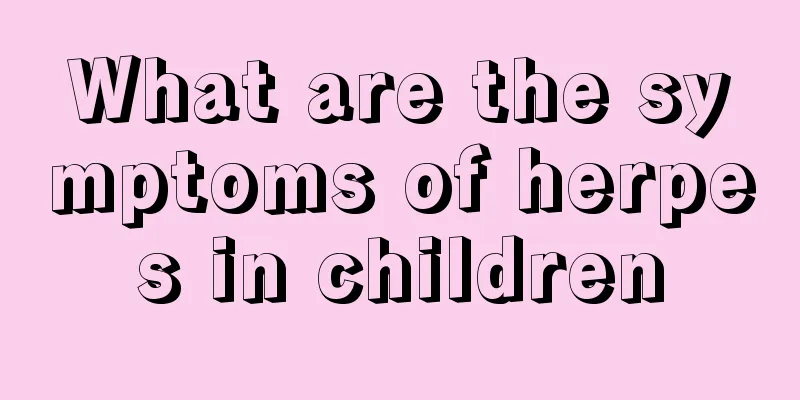Is hernia in children easy to treat?

|
Hernia is a disease that often occurs between children and the elderly. If a child has a hernia, he should go to the hospital to check whether it is a congenital hernia or an acquired hernia. These two require completely different treatment methods. Hernia in children is not easy to treat, and his self-healing ability is extremely low. He should go to a special department of the hospital for examination and treatment. A hernia is a mutation that causes an organ to move out of its original position. The situation is very grim. Let me give you a detailed introduction below. Pediatric hernia is one of the most common diseases in pediatric surgery and hernia surgery, mainly including congenital inguinal hernia and umbilical hernia. The main cause of hernia in children is congenital factors. Inguinal hernia is mainly caused by failure of the processus vaginalis to close. Umbilical hernia is caused by the failure of the umbilical ring to shrink and close in time. Premature and low-birth-weight infants are caused by incomplete growth and development at birth. Inguinal hernia in children over one year old cannot heal on its own. Surgery should be considered for children with umbilical hernia who are over four years old or have an umbilical ring diameter of 2 to 3 cm or more. The main surgical method for inguinal hernia in children is high ligation of the hernia sac, among which laparoscopic surgery has more obvious advantages. Umbilical hernia requires suture repair in addition to removing the hernia sac. The root cause of inguinal hernia in children is that the processus vaginalis fails to close in time. The processus vaginalis is formed by the descent of the round ligament of the testis or uterus and usually closes within one year after birth. The processus vaginalis of newborns and infants under six months old is often not completely closed, but not all cases of non-closure of the processus vaginalis do not result in a hernia. If the infant's abdominal wall is not strong enough, such as premature infants and low-birth-weight infants, inguinal hernia is more likely to occur. Other conditions such as excessive crying, constipation, coughing, etc. that increase intra-abdominal pressure can also promote the formation of hernia. The right testicle generally descends later than the left, and the processus vaginalis takes longer to close. Therefore, right-side inguinal hernia is more common than left-side inguinal hernia, and unilateral inguinal hernia is more common than bilateral inguinal hernia. Umbilical hernia in children occurs because the umbilical ring does not close. The umbilical ring is formed during the embryonic period and continues to shrink as the fetus grows. The diameter of the umbilical ring of a normal newborn is about 1 cm. Under normal circumstances, the umbilical ring continues to shrink after birth until it finally closes. After the baby's umbilical cord falls off, the umbilical scar is a congenital weak spot. At the same time, during infancy, the anterior and posterior sheaths of the rectus abdominis muscles on both sides do not close at the navel, leaving a defect, which provides conditions for the occurrence of umbilical hernia. Various factors that increase intra-abdominal pressure, such as crying, constipation, diarrhea, coughing, etc., can all contribute to the occurrence of umbilical hernia in children. |
<<: Hernia reduction in children
>>: What should I do if my child has indigestion and gets angry?
Recommend
What to do if a boy has inverted nipples
Many parents are worried about their baby's i...
Side effects of precocious puberty treatment
With the improvement of people's living stand...
What to do if children have recurring fever
Children's bodies are particularly fragile an...
Perianal abscess in children
Perianal abscess is a disease that occurs frequen...
The child keeps coughing
Coughing is a very common disease. This type of d...
If babies have white scalp, it is probably because they wash their hair incorrectly.
Babies' hair is different from adults'. B...
Baby spits up after feeding
There are many behaviors of babies in daily life ...
What should I do if my child has a fever and suddenly has convulsions?
Babies have relatively weak resistance, so they c...
What should I do if my 10-month-old baby refuses to eat milk powder?
It is difficult to take care of a baby who is bor...
Reasons why babies sweat a lot at night
Everyone knows that children often sweat a lot wh...
What is the recipe for eating pasta for a 1-year-old baby?
When the baby reaches a certain age, he can eat s...
What is normal vision for a second grader?
Second-grade students are generally around 8 to 1...
The cause of blue veins on baby's temples
Many parents are puzzled by the blue veins on the...
Baby's lips turn purple when crying
If a child's lips turn purple when crying, pa...
What to do if your child has a fever of 37.4
For adults, having a cold and fever is a very com...









